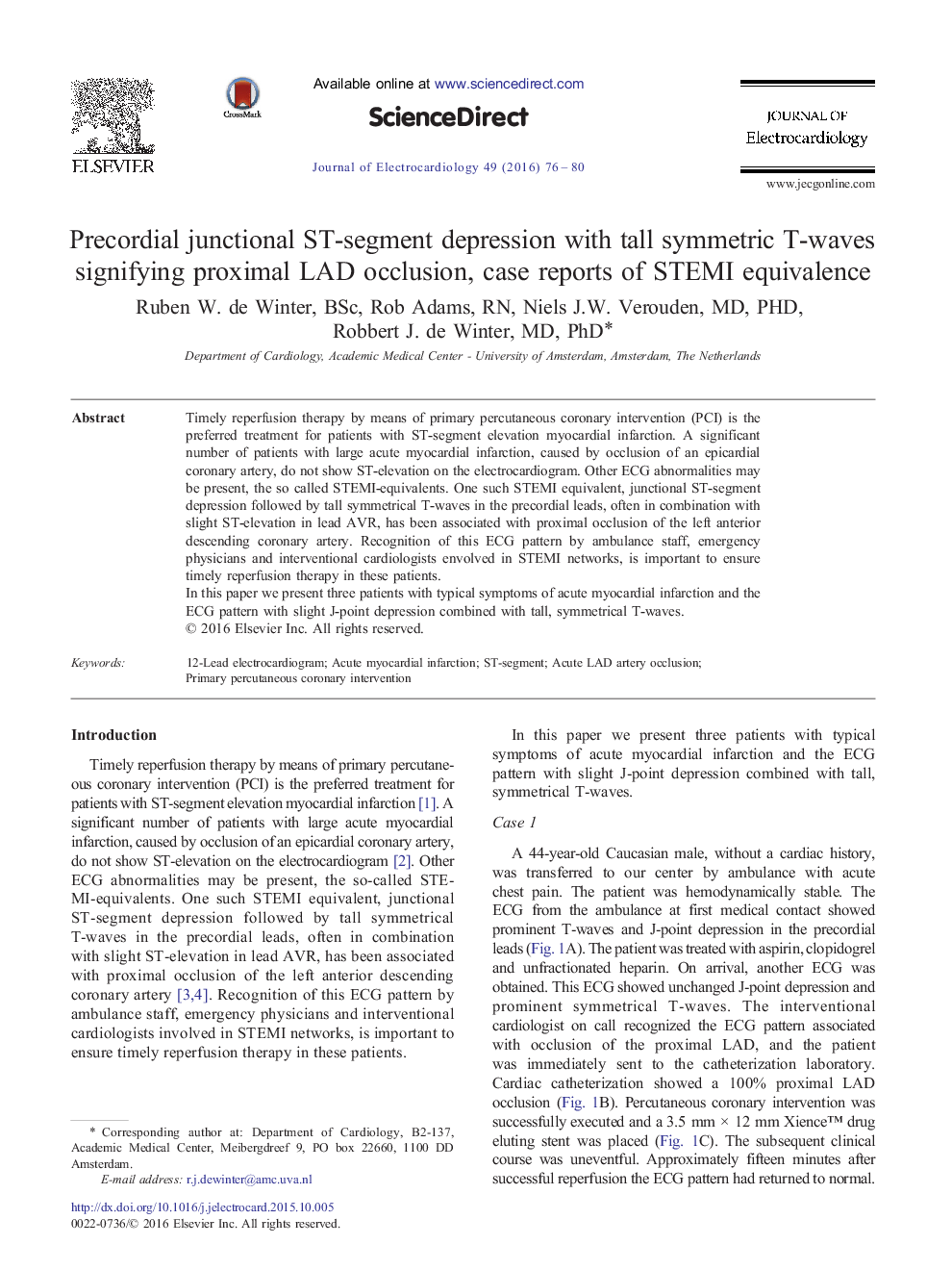| Article ID | Journal | Published Year | Pages | File Type |
|---|---|---|---|---|
| 2967341 | Journal of Electrocardiology | 2016 | 5 Pages |
•In acute coronary syndrome, J point depression with symmetric tall upright T waves predicts high grade proximal LAD disease.•This finding should prompt early intervention to establish reperfusion.•These observations are important for field triage and emergency room care of patients with chest pain.
Timely reperfusion therapy by means of primary percutaneous coronary intervention (PCI) is the preferred treatment for patients with ST-segment elevation myocardial infarction. A significant number of patients with large acute myocardial infarction, caused by occlusion of an epicardial coronary artery, do not show ST-elevation on the electrocardiogram. Other ECG abnormalities may be present, the so called STEMI-equivalents. One such STEMI equivalent, junctional ST-segment depression followed by tall symmetrical T-waves in the precordial leads, often in combination with slight ST-elevation in lead AVR, has been associated with proximal occlusion of the left anterior descending coronary artery. Recognition of this ECG pattern by ambulance staff, emergency physicians and interventional cardiologists envolved in STEMI networks, is important to ensure timely reperfusion therapy in these patients.In this paper we present three patients with typical symptoms of acute myocardial infarction and the ECG pattern with slight J-point depression combined with tall, symmetrical T-waves.
